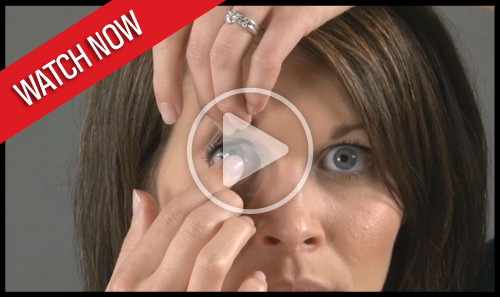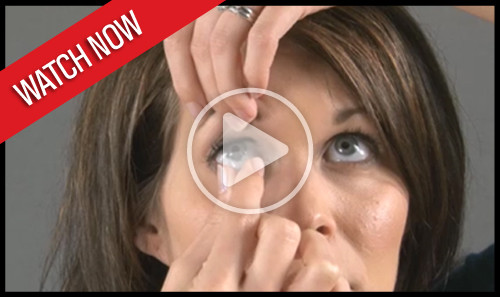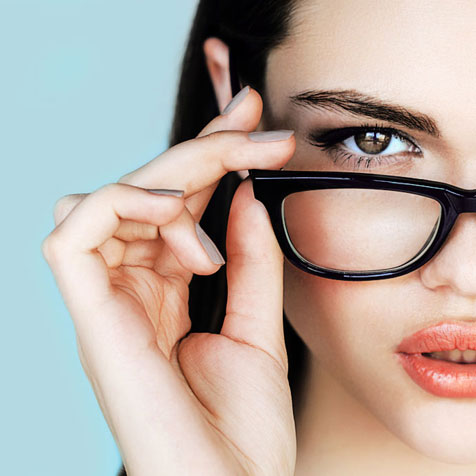
We feel it is important that you understand that when it comes to vision care products, they are not all created equally! Across the eye care industry there is a large variance in quality and craftsmanship. We take pride in using a wide-range of top quality materials with great product support to provide you with the best possible eye care products. We meet regularly with manufacturer's representatives to make sure that we have the latest and greatest available. Our value is in knowing what is available and what best meets your needs.
When considering where to purchase your eyeglasses, contact lenses, and sunwear, remember to consider the following. . .
Total Eye Health
Our office is part of this community. We want you to have sharp vision and great comfort with your glasses and contact lenses. The health of your eyes is our major concern. That is why we stand behind our products and services with unique warranties, and a professional and well-educated team. Different prescriptions require certain frame styles and lens treatments in order for your glasses to perform well and look great. Our trained opticians can guide you through this process. Our dispensary has hundreds of frames from which to choose, including a large selection of children's frames. We can help you find the size, shape and color of frame that is perfect for all family members. When it comes to contact lenses we offer a full spectrum of the latest and best performing products. Even if you have been told before that you cannot wear lenses, we may have a solution that is right for you.
Competitive Pricing
At Eye Care Center we offer competitive pricing, affordable eyewear packages, and multiple pair savings. You are also welcome to take advantage of manufacturer rebate programs and special promotions through our office. Be sure to ask about our convenient contact lens direct shipping program.
Convenience
Your Eye Care Center offers a wide selection of products in our office as well as through custom orders. We use only the highest quality materials and will courteously recommend eyewear and contact lenses that fit your lifestyle and fashion - all within your budget.
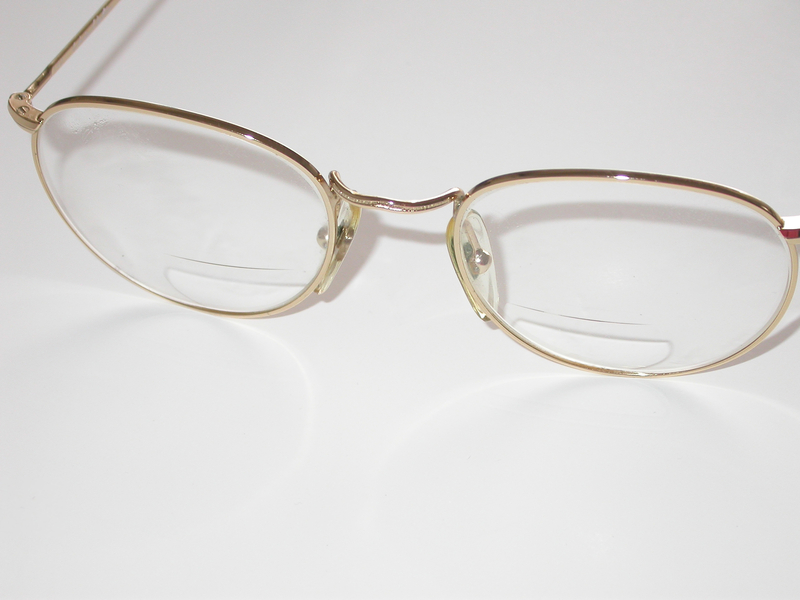
For many people, different lenses are needed for seeing at different distances. Bifocal lenses allow the wearer to look through two areas of the lens. One area focuses on distant objects. The other is used for reading. A little-known fact is that bifocals were invented by Benjamin Franklin, and his style of bifocals are still available today.
Most of the time the “reading” area is smaller, shaped like a sideways “D”, and found in the lower hemisphere of the lens. These bifocals are called line bifocals or flat-tops. If you are focusing on distant objects, you look through the top half of the lenses. To read a book, magazine, or newspaper, you look through the “reading” area. The Franklin style lenses are less common, and are split horizontally down the middle of each lens. One thing that is difficult about using bifocals is dealing with the line between the two vision areas. Fortunately, recent technologies have developed a new type of lens, called the no-line, or progressive, lens.
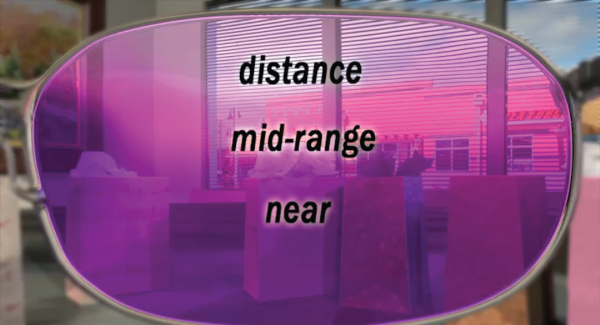
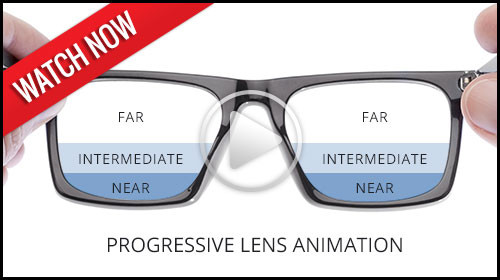 One of the main problems with bifocal and trifocal lenses is the problem of eye fatigue. It is difficult to switch from one focusing power to another. It can make your eyes tired, and it can even lead to a headache, sore neck and sore back.
One of the main problems with bifocal and trifocal lenses is the problem of eye fatigue. It is difficult to switch from one focusing power to another. It can make your eyes tired, and it can even lead to a headache, sore neck and sore back.
A recent variation of bifocals and trifocals is the no-line lens or progressive lens. No-lines provide a smooth transition from focusing on nearby to focusing on distant objects because they do not have a distinct line which separates the focusing powers. Instead, a gradual change in power allows the wearer to focus on objects at all distances. Distant objects are viewed through the upper portion of the lens, while near objects are viewed through the middle or lower portion of the lens. These are also great for computer users.
Bifocals allow the wearer to read through one area of the lens, and to focus on distant objects through another area of the lens. As the eyes age, though, a stronger prescription is often needed to read. This would be fine, but the stronger prescription that allows for reading makes it difficult to focus on objects at intermediate distances, such as grocery items on a shelf or your speedometer. Thus, trifocals are necessary for a third prescription for intermediate focusing.
Trifocals, also known as line trifocals, feature three areas of focusing power, each separated from the other by a distinct line. The three windows allow for focusing on distant objects, intermediately distanced objects, and for reading. The downside of trifocals is dealing with the lines between the different focusing powers. Fortunately, recent advances in technology have led to developments in no-line, or progressive lenses.
Previous to the last few years, the only materials available for use as lenses were glass and a hard resin called CR-39. But recently, high index lenses have become available. High index materials are named because they have a higher index of light refraction. Basically, they can do the same job that glass or CR-39 does, but high index lenses are much thinner and lighter. With high index lenses, you can avoid having “soda bottle” lenses.
When learning about high index lenses, you may hear many unfamiliar numbers and terms. Here are a few things to remember.
Polycarbonate
The first and still the most popular high index plastic is polycarbonate. Polycarbonate was originally developed for fighter jet cockpits. It is very strong, very light, and resistant to scratches and breaking. Most sports lenses are made of polycarbonate.
Mid-Index
Other high index materials are classified by numbers. The higher the number, the thinner and lighter the lens. The lower numbers are classified as mid-index lenses. Mid-index lenses, such as 1.54, 1.56, and 1.57, are thinner than glass, and nearly as strong as CR-39.
High-Index
High index lenses are much thinner than regular glass or plastic. Talk with Dr. Belinda Dobson or your Eye Care Center Optician to decide which high index lens is right for you.
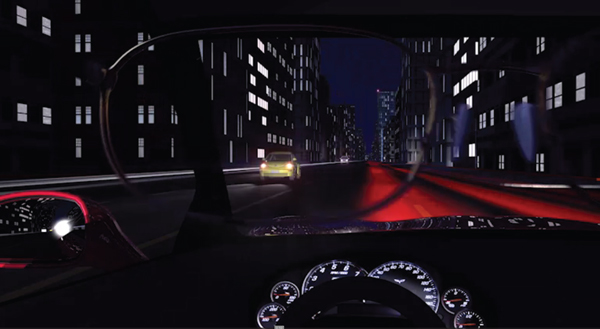
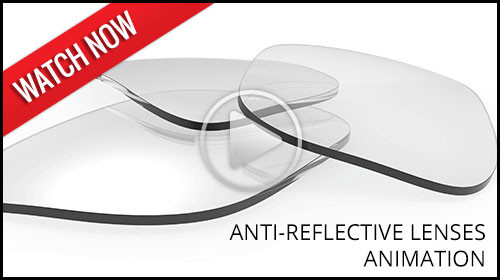 Normal eyewear often creates glare, reflections, and “ghost images.” Now all that can be eliminated with an anti-reflective coating.
Normal eyewear often creates glare, reflections, and “ghost images.” Now all that can be eliminated with an anti-reflective coating.
What we see is a result of light being sensed by our eyes. With normal glasses, much of the light reflects off the lenses. This produces glare. It also reduces the wearer’s visual acuity. In other words, the light reflection is both a cosmetic and visual problem.
Anti-reflective coatings increase light transmission through the lenses to 99.5 percent. They make it easier to see and easier for others to see you. These coatings are especially useful for those viewing computer screens and driving at night.
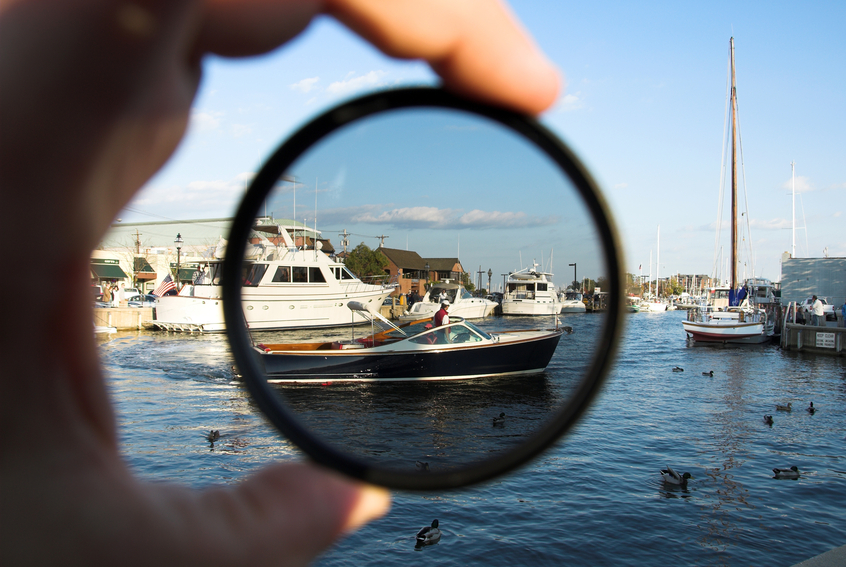
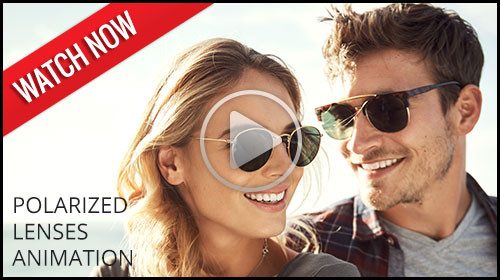 Glare from wet roads, light reflecting off other vehicles, and glare from your own windshield can be annoying and dangerous. To eliminate this glare, we offer polarized lenses. Polarized lenses eliminate almost all glare, reducing eye strain and increasing visibility. Polarized lenses are the most effective way to reduce glare.
Glare from wet roads, light reflecting off other vehicles, and glare from your own windshield can be annoying and dangerous. To eliminate this glare, we offer polarized lenses. Polarized lenses eliminate almost all glare, reducing eye strain and increasing visibility. Polarized lenses are the most effective way to reduce glare.
Most glare comes from horizontal surfaces, so the light is “horizontally polarized.” Polarized lenses feature vertically-oriented “polarizers.” These polarizers block the horizontally-polarized light. The result is a glare-reduced view of the world. Polarized lenses can make a world of difference for any outdoor enthusiast. Fisherman can eliminate the bright reflections from the water and actually see into the water more easily than with other sunglasses, golfers can see the green easier, and joggers and bikers can enjoy reduced glare from the road. In addition, drivers can enjoy the safety and comfort that polarized lenses provide while driving.
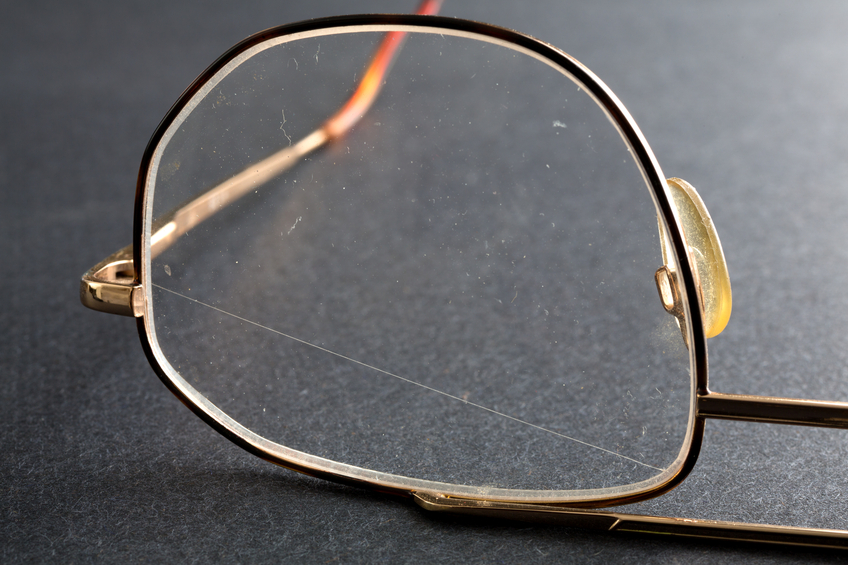
If you have hard resin lenses (CR-39), you should consider getting a scratch resistant coating. Resins and plastics are more susceptible to scratches than glass. Scratches damage the cosmetic look of the lenses and compromise their performance. With a scratch resistant coating, you do not have to worry as much about minor scratches on your lenses.
Another advantage of scratch resistant coatings is that most coatings come with a one-year warranty. They are a great investment to prevent minor scratches. However, it is important to remember that scratch resistant does not mean scratch-proof. All lenses are susceptible to scratches.
If you have ever felt frustrated at needing both prescription glasses and prescription sunglasses to accommodate an outdoor lifestyle, you should consider photochromic lenses. Photochromic lenses darken when exposed to UV rays. The change is caused by photochromic molecules that are found throughout the lens or in a coating on the front of the lens. When the wearer goes outside, the lenses darken or tint. When the wearer goes back inside, the glasses become clear.
There are a variety of photochromic options available. Depending on what you choose, you can customize the lenses to your needs. Some lenses darken only in direct sunlight, while others darken in little or no direct light. Some are designed to darken while you are in the car to reduce road glare while you are driving. You can even choose the color of the tint. Ask your doctor what options are available.
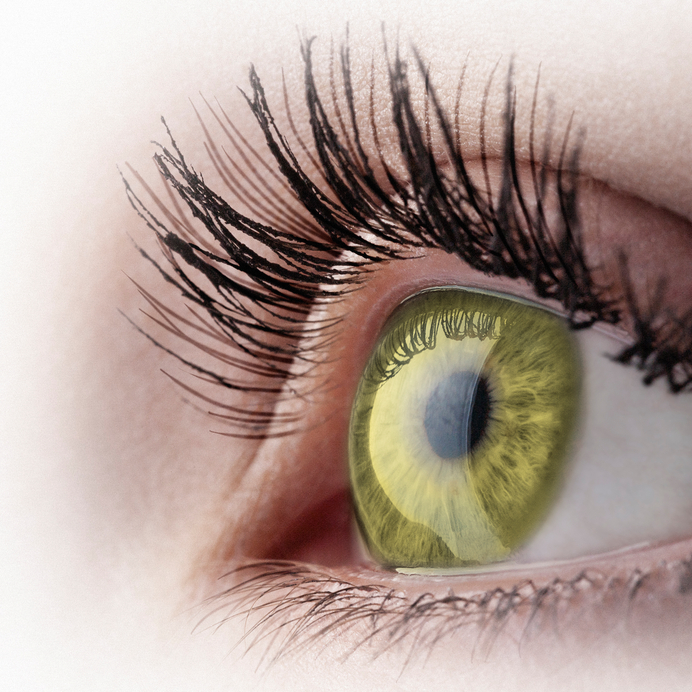
Your glasses do not have to be an eyesore to those around you. Eyeglasses can be a stylish accessory, a part of your personality, or a way for you to be unique. There are a variety of frames to choose from, but you may not know that there are also many ways to improve the appearance of the lenses. Cosmetic tints are now available. These tints offer a variety of colors and shades. You can choose light blue or any other color of the rainbow. Some lenses are clear at the bottom and gradually get more colored towards the top of the lenses. There are many ways to adjust your lenses to whatever style suits your personality. Some tints are also functional.
Recently there has been much attention on a condition called Computer Vision Syndrome, or CVS. A special tint for your glasses can reduce eyestrain associated with CVS.
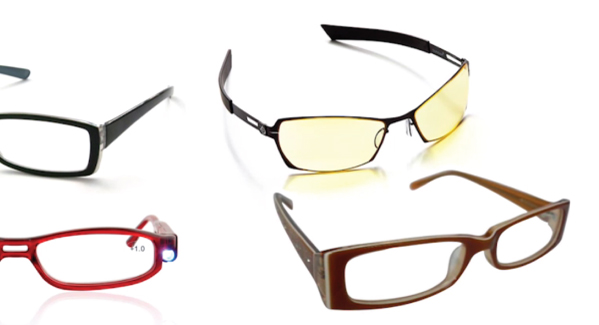
 We all have heard the phrase, “Different strokes for different folks.” Well, this also holds true when it comes to selecting glasses. There are different lenses for just about everybody. No matter what your particular need, there is probably a specialty lens designed for you.
We all have heard the phrase, “Different strokes for different folks.” Well, this also holds true when it comes to selecting glasses. There are different lenses for just about everybody. No matter what your particular need, there is probably a specialty lens designed for you.
For example, a specialty lens that is becoming increasingly useful is designed for computer users. Computer lenses have “windows” designed for viewing your computer screen, documents on your desk, and distant objects. The lenses are designed to reduce Computer Vision Syndrome, or CVS, which is characterized by headaches, eye strain, neck and back aches, dry eyes, blurred vision, and double vision.
Another example is called the double D-segment lens, also known as the double flat-top lens. If you look through most of the lens, you can focus on distant objects. But you can also look through a D-shaped segment near the top of the lens to see nearby overhead objects more clearly. This is very useful if you are involved in work where you are looking at nearby objects above your field of vision, as with carpenters and pilots. The D-shaped segment near the bottom of the lens allows for reading.
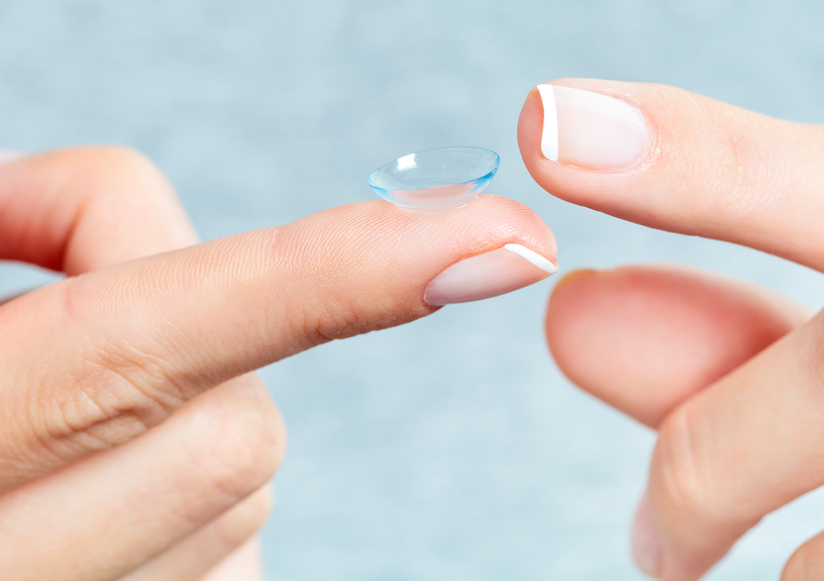
Contact lenses, when used properly, are very convenient, and with the latest advancements in technology, they are extremely comfortable. Most of the time, you will hardly know you are wearing them, though you will certainly notice how clear and accurate your vision is. Contact lenses are small lenses worn on the surface of the eye, or cornea, to correct vision. Lenses are sometimes worn for cosmetic purposes only. We recommend wearing contact lenses in conjunction with eye glasses. This allows you to best meet your overall lifestyle needs while protecting the integrity of your overall eye health.
We will discuss the option that is best for you. Many patients choose contact lenses for their primary vision correction and glasses as a backup option. Many patients who wear glasses have activities and events where they would rather not wear their glasses and they choose contact lenses for these times.
Contact Lens Types
The types of contact lenses available have exploded in the past few years. There are contact lenses available for almost everyone. Many or our patients were told in the past that they could not wear contacts, or they tried unsuccessfully to wear contact lenses. You owe it to yourself to see what is new. We carry many options, and promise to do our best in selecting contact lenses that you will love wearing. Choose from the following list for a brief look at some of the options available.
Soft lenses are very comfortable and come in a variety of types, depending on the wearer’s needs. Conventional soft lenses are worn during the day, and cleaned and stored at night. Usually once a week the lenses must be cleaned using an enzymatic cleaner, which removes protein deposits. These lenses can last for a year or more if your prescription stays the same and you take good care of them.
These lenses are similar to conventional soft lenses except they are replaced more frequently. Oftentimes, they are worn for one-month periods and then replaced. Other frequent replacement soft lens types are worn two to three months before they are replaced. Like conventional soft lenses, they have to be cleaned and stored at night and cleaned once a week with an enzymatic cleaner to remove protein deposits.
Disposable soft lenses are much more popular than conventional soft lenses. These lenses are worn for a period of time and then, of course, thrown away. The most well-known disposables last for two weeks. There are also one-week and one-day disposables. These are perfect for many patients who were told they could not wear contact lenses because of allergies or mild dry eye conditions. They have a low cost per lens and are also popular for athletes and hobbyists who do not necessarily want to wear contact lenses every day.
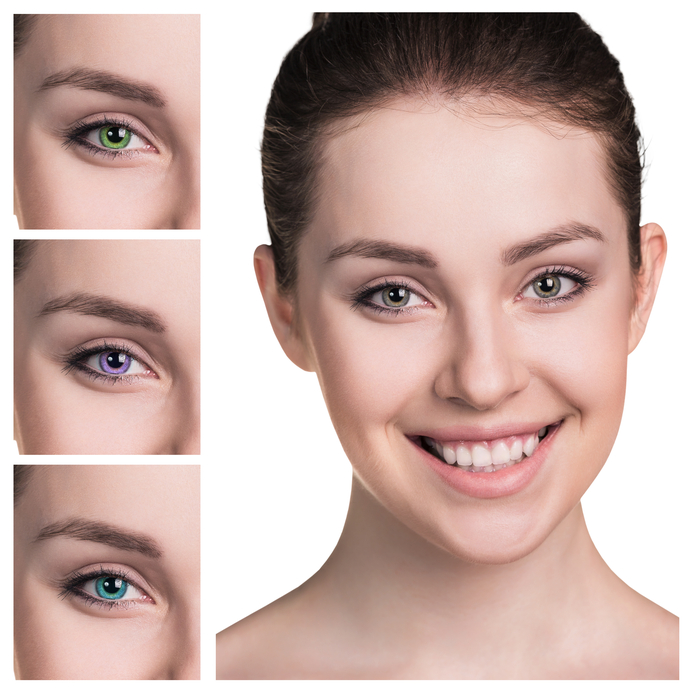
Next, you have tinted soft lenses, available in conventional, disposable, or frequent replacement types. With tinted soft lenses, you can change or enhance your eye color. Even if you do not need corrective lenses, you can use “plano” colored contacts to change your eye color. It is important to be fitted by an eye doctor for colored contact lenses even if you do not need a prescription; wearing the wrong style can damage your eyeball.
Recent technology has greatly improved bifocal soft lenses. Many patients past their 40s who need bifocals can now enjoy the comfort and benefits of soft contact lenses.
Toric lenses are used to correct astigmatism. Astigmatism is a vision condition where an irregularly shaped cornea affects the vision. In the past, the only options for those with astigmatism were either glasses or hard gas permeable contact lenses. But toric lenses, which are lenses with a special shape, now offer an alternative. There are several types of toric lenses to choose from.
Extended wear lenses, the result of new technology in lens materials, transmit more oxygen to the cornea of the eye. Some of these lens materials can be worn up to 30 days, day and night, without removal. Extended wear lenses can last one week, two weeks, or one month, depending upon the lens material and your doctor’s recommendations.
As the name implies, these lenses are hard and gas permeable. If you’ve been told you cannot wear soft lenses, RGP lenses are often a great alternative. RGP lenses are available in specialized designs to correct just about any vision disorder.

There are a variety of solutions available from many different manufacturers. The important thing to remember is that not every solution is right for every type of contact lens. Some contact lenses require the use of multipurpose solutions, while others require separate solutions for the four steps in contact lens care: disinfecting, cleaning, rinsing, and enzyming. Use only the lens solutions that are recommended by the eye doctor. If you wish to change brands, check with our office first.
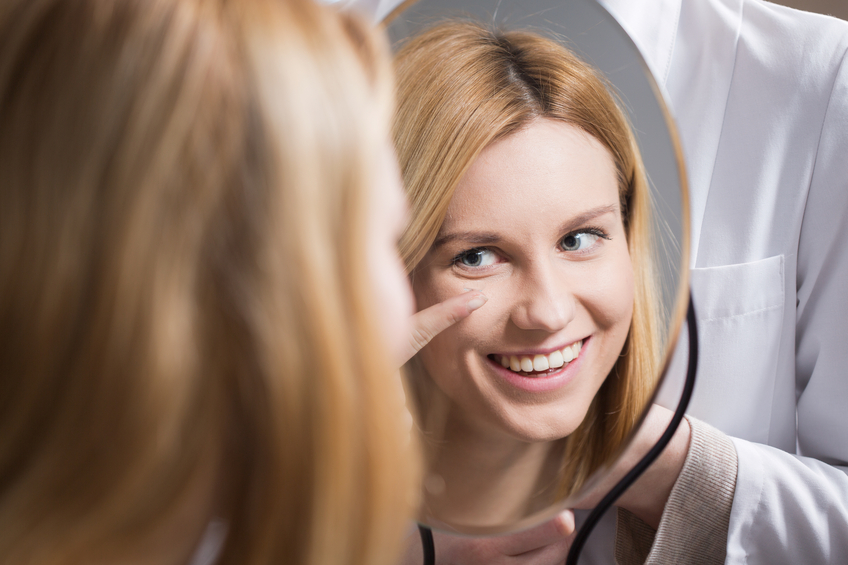
Few things affect the quality of your life more than your eyes--never put them at risk. Contact lenses are prescription medical devices. To make sure your eyes and vision stay healthy while wearing contact lenses, please follow these few guidelines or the instructions recommended by your doctor.
Warning: Ocular complications and/or long-term corneal damage are the consequences of contact lenses that are worn longer than recommended. Oftentimes, your lenses will still feel good even when you are over-wearing them. Do not wear your lenses overnight unless they are approved for extended wear and your doctor has discussed this with you. Overnight wear increases the risk of infection and other complications.
Wearing Schedule
It will take at least a few days for your eyes to get used to wearing contact lenses. The best way to insure maximum visual comfort and keep your eyes healthy is to patiently and faithfully adhere to this wearing schedule.
| Day | Gas Permeable Lenses | Soft Lenses |
|---|---|---|
| 1 | 4 hours | 6 hours |
| 2 | 6 hours | 8 hours |
| 3 | 8 hours | 10 hours |
| 4 | 10 hours | 12 hours |
| 5 | 12 hours | 12 hours |
- DON’T wear your lenses longer than 12 hours a day until your first follow-up visit with your doctor, unless the doctor has specifically told you otherwise.
- DON’T continue use of contact lenses if your eyes become red, irritated, painful, or if your vision gets worse while wearing lenses. Immediately take out the lenses and clean them. Let your eyes get back to normal and if the problem persists, contact our office.
- DON’T exceed the wearing times suggested, even if your lenses still feel comfortable. Studies have proven that the eye needs time to adapt to contact lenses, and your wearing schedule is based on those studies.
- DO always remove your contact lenses at least one hour before going to bed to allow for proper oxygen nourishment to the cornea.
- DO schedule and keep follow-up appointments with your eye doctor.
- DO wear your contact lenses for at least 4 hours the day of your follow-up appointment unless you are experiencing discomfort.
Please Note: If you complete your wearing schedule for a given day and take out your lenses for at least 2 hours, you can wear them the same day for another 2 to 3 hours after cleaning and disinfecting them.
Caring For Your Contacts
Deposits and infectious organisms such as bacteria, viruses--etc., can build up on the surface of all contact lenses. For this reason, it is very important to keep them clean and disinfected.
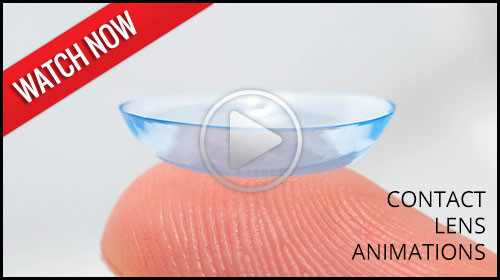
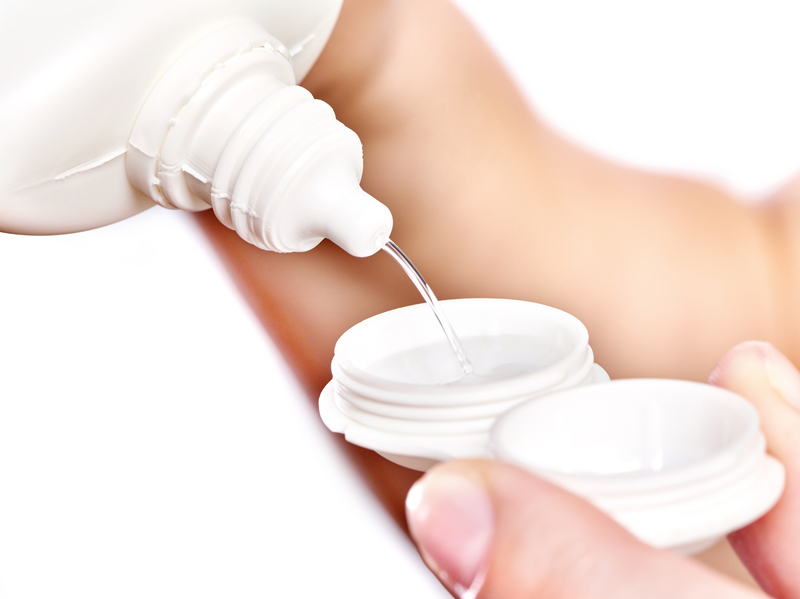 There are four steps in contact lens care--follow the care prescribed for your lenses:
There are four steps in contact lens care--follow the care prescribed for your lenses:
- Cleaning removes dirt, mucous, and other debris that gets on the lenses during wear.
- Disinfecting kills bacteria (germs) on the lenses. Disinfecting is essential to prevent serious eye infections.
- Rinsing removes the other solutions from the lenses and prepares the lenses for wear.
- Enzyming uses enzyme drops or tablets to remove protein and other deposits that build up over time on the lenses.
The best way to properly care for your lenses is to develop a care routine, then stick to that routine! Remember to:
- Follow the directions outlined by your eye doctor. Oftentimes instructions are also listed on the packaging or the package insert for the contact lens solutions prescribed for you.
- Multi-purpose solutions can be used for more than one step in contact lens care. Read the label to see which functions the solutions can be used for.
- Many solutions can not be used together, and not all solutions are appropriate for all types of lenses. Only use solutions recommended by your eye doctor, and check with your eye doctor if you want to switch brands.
- When you remove your lenses, they must be cleaned, rinsed, and disinfected before they are worn again.
- Enzyming and cleaning are not a substitute for disinfecting.
- Lenses that have been stored for more than 12 hours may need to be cleaned, disinfected, and rinsed again.
- Make sure solution containers are kept closed tightly, stored upright, and kept in a clean, dry, cool place when you are not using them. Keep your case clean and replace it every 2-3 months to prevent bacterial growth.
- Don’t touch container bottle tips to any surface to prevent them from becoming contaminated.
- Throw away expired solutions. (Look on the bottle for the expiration date!)
- Use new solution in your contact lenses case every day.
- Discuss with your eye doctor the care for your lenses if you wear them while swimming in a pool or hot tub.
- Only use approved rewetting drops for lubricating or wetting your lenses. Never place the lenses in your mouth.
- Do not use tap water to rinse soft contact lenses.
- Be careful with makeup, lotions, creams and sprays--consider putting on lenses before makeup and remove them before removing makeup. Also, water-based makeup is less likely to damage lenses than oil-based makeup.
Be careful with makeup, lotions, creams and sprays--consider putting on lenses before makeup and remove them before removing makeup. Also, water-based makeup is less likely to damage lenses than oil-based makeup.
Here’s what you need to watch for: Redness, blurriness, light sensitivity. Remove your lenses if you are experiencing any of these 3 things. If your eyes have not returned to normal after 24 hours, please contact our office. If you have any change in vision, comfort, or irritation, immediately remove your lenses. If there is no improvement within a couple of hours, please contact our office.

If you play sports, you should keep two things in mind related to your vision: protection and precision.
Sports lenses protect the wearer’s eyes. Sports such as tennis, baseball, softball, and racquetball may see ball speeds of 90 mph or more. In baseball alone, there are over 500,000 injuries per year! But that is not the most common cause of sports-related eye injuries. Most eye injuries occur in basketball, where an elbow or a finger jabbed into the eye can cause corneal abrasions, fractured bones, retinal detachments, or even blindness. Polycarbonate lenses are more resistant to impact than glass or plastic and offer protection for 90% of eye injuries. Protective eyewear fits well, features a padded bridge, has prescription or non-prescription lenses, and has deep-grooved eyewires to prevent the lens from falling out.
The specialized lenses also optimize your vision. Depending on your sport, certain lenses are more appropriate than others. Dark, UV protection lenses are great for baseball and other outdoor sports. Golfers can benefit from gray-brown colored lenses which make it easier to outline the course. Even if you do not normally wear glasses, non-prescription sports lenses can benefit your performance. Some people think that lenses prevent the wearer from seeing the action, but many sports lenses have anti-fog, glare reduction, and scratch resistant properties. Some are also designed to maximize peripheral vision.

Here at the Eye Care Center, protecting your eyes from harmful UV light rays is a top priority. Eye conditions resulting from sunlight exposure may cause irreversible damage to the back of your eye (called your retina), and it can even cause early cataract formation, which requires surgery.
To reduce exposure to UV rays and their effects, we recommend you invest in a set of sunglasses which can provide at least 98% protection from UVA and UVB rays. While cheaper sunglasses can range from poor to excellent UV protection, our sunwear lines provide the best protection from the sun. At Eye Care Center, we carry College Station’s largest selection of styles and colors.
Our doctors specialize in fitting prescription sunglasses that not only protect your eyes from harmful UV light, but also allow you to stay updated with the latest fashion trends. Polarized lenses are recommended for optimum outdoor vision. For years, boaters and fishermen have used polarized sunglasses to reduce reflected glare from the water surrounding them. But now that many others who spend time outdoors have discovered the benefits of polarized lenses, the popularity of these types of sunglasses has soared.
Besides boaters, outdoor enthusiasts who benefit the most from polarized sunglasses include skiers, golfers, bikers, and joggers, who enjoy a clearer view along with elimination of glare. Polarized sunglasses can also be used indoors by light-sensitive people, including post-cataract surgery patients and those continually exposed to bright light through windows.
Light reflected from surfaces like a flat road or smooth water is generally horizontally polarized. The vertically oriented polarizers in the lenses block this horizontally polarized light.
The result: a reduction in annoying and sometimes dangerous glare.
There is some debate on the effects of polarized lenses on snow-covered surfaces. Some experts say they can reduce the intense glare that is caused by sunlight reflecting off snow. Others report that the lenses are not satisfactory for sports such as downhill skiing because they may not provide the contrast the eye needs to distinguish ice patches or moguls.
In addition, polarized lenses may also react adversely with liquid crystal displays (LCDs) found on the dashboards of some cars or in other places such as the digital screens on automatic teller (bank) machines. The problem with LCDs is that when viewed through polarized lenses from a certain angle, they can be invisible.
Finally, if you have a youngster in the family, it is never too early to fit them with sunglasses. Children under the age of 20 are the most susceptible to the damaging effects of UV light. One concern of parents is that their child will scratch, break, or lose the sunglasses; we are here to help you make the best choice for your child.
Eye Care Center is equipped with a state-of-the-art laboratory and optical dispensary that in most cases can bring you 1-hour service for your glasses! In the day of, “I need them by yesterday,” same day service provides a value to many patients. While we stock single vision polycarbonate lenses for same day service.
For more customized, digital technology we recommend shipping to our dedicated laser-equipped lab. We upgrade your glasses to overnight delivery at no additional cost to you in the event we ship to custom-fit, tailored labs. We specialize in catering to your individual needs for custom glasses such as: computer glasses, golf glasses, motorcycle glasses, safety glasses, and reading, sewing, and/or shooting glasses. Our highly qualified professionals are able to adjust and fit your glasses to you for extended comfort and vision.
Not only do we fabricate your glasses, but we also maintain and repair them should they become broken or damaged. All adjustments are always FREE for the lifetime of your glasses. We also offer free nose pads replacement and deep, professional cleanings. You do not have to be an existing patient to enjoy this free service. Our opticians are dedicated to offering you outstanding quality and service time after time.
Our team of doctors and staff utilize the latest technology to provide you with any frame or lens design available, while keeping abreast of the latest lens innovations. From progressive (no-line) bifocals, to anti-reflective treatments, to polarized sun lenses, to the thinnest and lightest lens materials, we will help you select the lens options that best fit your lifestyle and vision requirements.
Today’s frames come in a wide variety of materials, from the most durable plastics to the almost indestructible titanium. There are also numerous frame styles, from designer fashion frames, to children’s frames, to sun and sport glasses, to special computer relief glasses, all the way to safety frames. Our staff is trained to help you find frames that look great, fit properly, and meet all your vision needs.
Once you have your perfect eyewear, it’s time to ACCESSORIZE! At Eye Care Center, we offer a multitude of items to help you get the most out of your glasses.
Once your purchase your eyeglasses, your optician will explain how to properly care for your lenses, ensuring they don’t scratch or smudge. Dr. Belinda Dobson believes in providing value in this process. For just $5 you can purchase a lens cleaner and get unlimited free refills for an entire year. Stop by anytime we are open for your free refill!
Some prescriptions lend themselves to use convenient over the counter reading glasses. Most glasses you purchase at drug stores or chain stores are not optically inspected and do not offer a premium coating. At Eye Care Center, we can help you select your perfect prescription from a large assortment of colors and styles. Our reading glasses even has a free anti-glare coating to help you on the computer and digital devices.
Whether you are boating, sewing, golfing, or juggling multiple pairs of glasses, we have the cable, cord, or chain for you! Children benefit from proper straps as well, as sometimes in small children frames tend to slip or move down their nose during activities. We even have devices that have floatation features if you are boating and your glasses find themselves in the water! We have you covered at Eye Care Center.
Our frame buddies are back by popular demand in our optical at Eye Care Center. These little animals are popular among children especially, as they hold onto your frames when you are not wearing them. They ensure frames remain in a consistent (and safe) location when not on your child’s face. Don’t forget to ask us about frame buddies at your next appointment at Eye Care Center College Station / Bryan.
Eye Care Center is dedicated to providing the absolute most cutting edge technology available. Dr. Belinda Dobson introduces new technology into our patient care process annually. Next time you visit us, you are certain to be surprised with the newest in technology advancements.
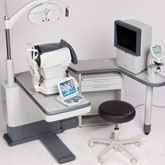
Out with the old, in with the new! At Eye Care Center, Dr. Belinda Dobson uses the TRS-5100, which is Marco's latest generation of digital refraction technology.
Replacing the standard refractor, it allows Dr. Belinda Dobson to control the entire refraction process from a keypad. Do you become anxious about picking from “Which is better, one or two?” With our new technology, this becomes effortless and obsolete. It uses dual imagining so you never have to ‘flip back and forth’ between options! It’s automated and digital, and more accurate than ever before. Come see what you have been missing. See more precise. See more clearly. See the difference.
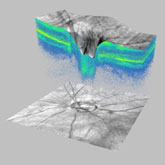
This new high-performance OCT instrument from Carl Zeiss Meditec offers a technological quantum leap forward. Featuring spectral domain technology, Cirrus HD-OCT delivers exquisite high-definition 3-D images of the ocular structures. High Definition data acquisition and advanced analysis provide precise registration and excellent reproducibility critical for glaucoma detection and management.
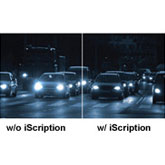
For the first time, experience precision optics with the absolute most high definition lenses available. Experience better night/low-light vision. For example: Looking directly at a light source at night such as car lights, results in glare and halo effects. These are reduced by i-Scription technology.
Experience Better visual contrast. For example: See improved contrast when observing white letters on a black background, which is especially challenging for the eyes. i-Scription technology by Zeiss sharpens contrast.
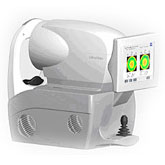
The iProfiler is an instrument designed to determine the exact ‘fingerprint’ of your eyes. This makes it possible to produce Zeiss customized lenses using i.Scription and deliver your best vision possible. Around 1,500 measuring points are used to determine a precise visual profile of your eye. Even the slightest deviations from the ideal shape of the eye can impact your vision. Based on your possible visual profile, we can determine your best prescription possible.
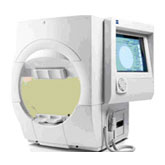
Validated by decades of research and clinical experience, HFA is the accepted standard of care in glaucoma diagnosis and management. HFA has the widest range of testing protocols on any perimeter. The ergonomic design promotes maximum comfort and patient access. It also features screening options that allow Dr. Dobson to screen patients for potential vision problems as part of a thorough eye health assessment.
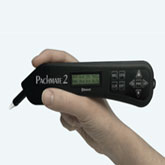
A pachymeter is a medical device that utilizes ultrasound technology to measure the thickness of the eye’s cornea. It is used to perform corneal pachymetry prior to LASIK surgery, for Keratoconus screening, and is useful in screening for patients suspected of developing glaucoma, as well as other corneal diseases. At Eye Care Center, we also utilize pachymetry for the management of an eye condition called Fuch's corneal dystrophy.
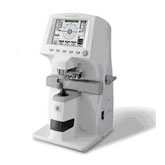
Eye Care Center utilizes lensometry to compare your new prescription to your old glasses. Often patients want to know if their prescription has changed but forget to bring in their old prescription scripts. Lensometry obtains a reading on your old glasses to quantify the changes in refractive error.
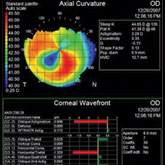
The cornea is the front structure of the eye which serves as the window for your vision. Many times with conditions such as corneal astigmatism, it is difficult to properly fit specialty contact lenses without a more in-depth analysis of the cornea.
Corneal topography allows Dr. Belinda Dobson to map the cornea and successfully fit patients who have previously never been able to wear contact lenses. In addition, corneal topography is used for the diagnosis and management of many eye conditions such as keratoconus, pellucid marginal degeneration, and a host of other rare eye diseases.
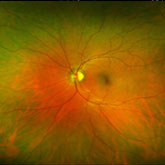
The high definition retinal imaging instrument called Optomap Daytona features state of the art optics which capture a high resolution, panoramic image of your retina, macula, and optic nerve.
The Optomap image facilitates early detection of retinal pathology and other life threatening diseases such as cancer and stroke. The process is quick, painless, and allows your eye doctor to see up to 500% more of the retina than traditional techniques, and often times a dilated pupil exam is not mandatory.





